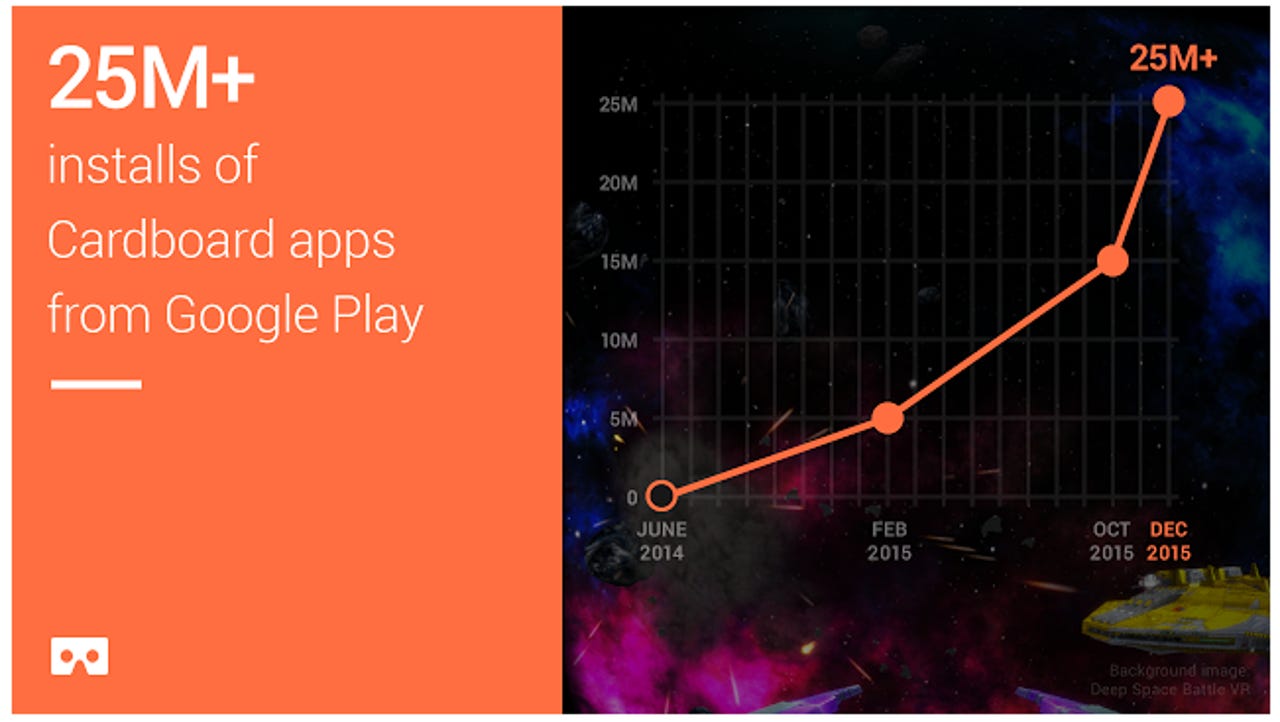Google says Cardboard virtual reality viewer gaining traction

Google Cardboard, a simple viewer for virtual reality content, has gained traction in what could be one of the more interesting experiments in so-called immersive experiences.
While Microsoft's HoloLens and Facebook's Oculus garner a lot of attention and headlines, Google went simple with virtual reality. After 19 months, Google said more than 5 million Cardboard viewers have shipped.
In a blog post, Google also said that there have been more than 25 million installs of Cardboard apps on Google Play. And YouTube has delivered more than 350,000 hours of virtual reality videos.

Most of the traction in apps and content for Cardboard came in October 2015 when Google created a more-friendly SDK for developers and accelerated through the end of the year. The Cardboard approach for Google is to rely on Android developers, its installed base and inexpensive players. Other virtual reality efforts require more effort and money.
Overall, the ramp for virtual reality will be slow, but all the technology giants have some kind of bet on the technology. Google's Cardboard effort is the centerpiece of a broader effort to bring virtual reality mass market--and ultimately play in VR ads.
More:
- Virtual reality faces five hurdles to justify the CES buzz
- Facebook takes steps to boosting 360 video, VR techniques
- Oculus Rift VR: We must control virtual reality before it controls us
- Facebook's Zuckerberg: Virtual reality will have slow ramp
- Google brings VR to the masses with broader Cardboard app availability
- Eyeballing Oculus Rift and HoloLens, now Google creates its own virtual reality arm
- NASA shows the world its 20-year virtual reality experiment to train astronauts: The inside story